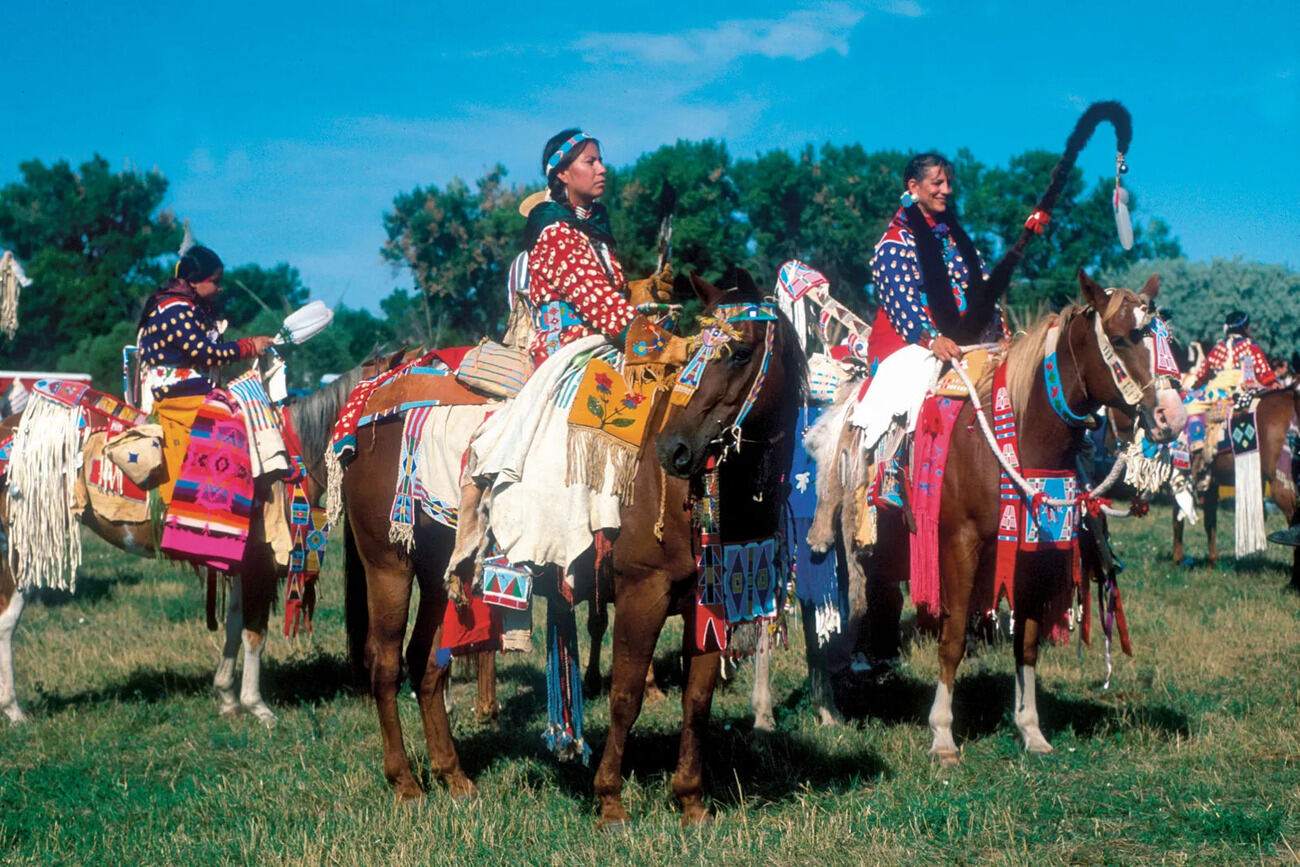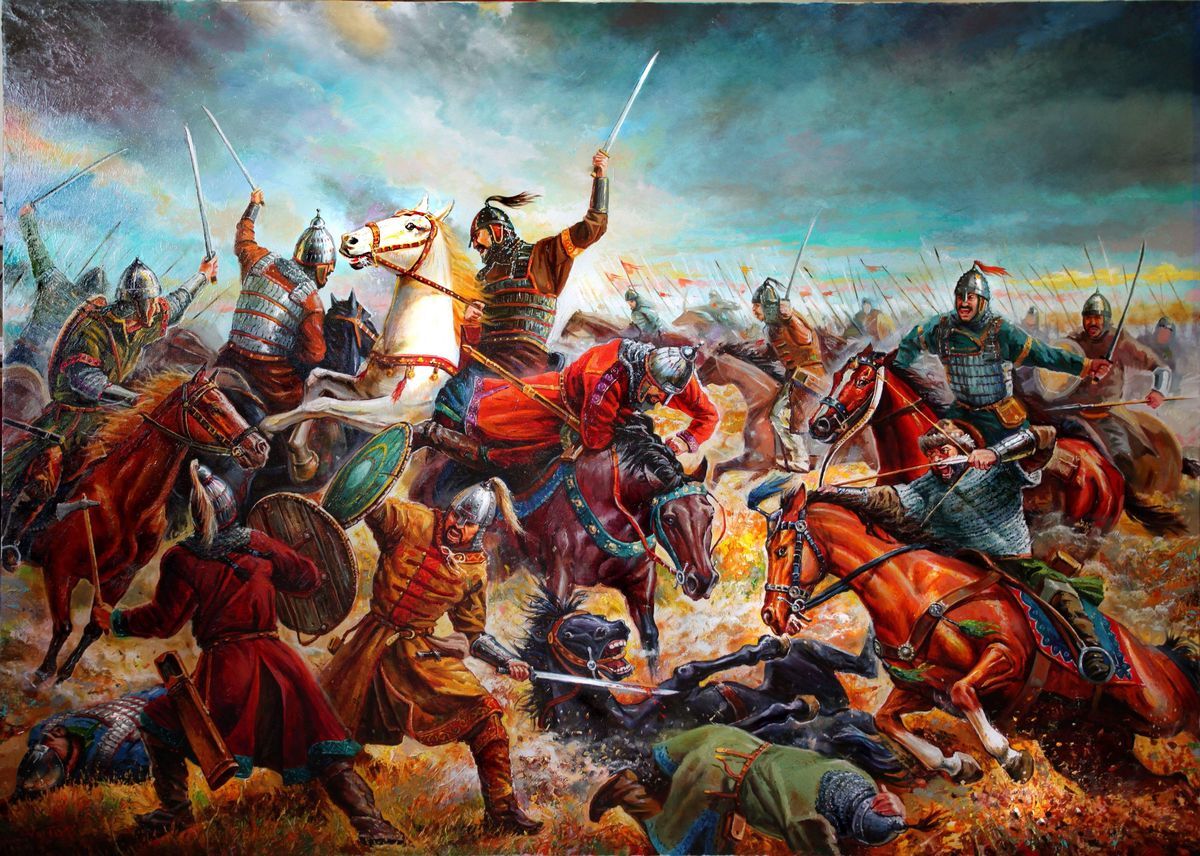
Ever wondered about the rich history and vibrant culture of the Crow Tribe? Well, you're in for a treat! This tribe, also known as the Apsáalooke, has a fascinating story that spans centuries, filled with traditions, battles, and a deep connection to the land. From their legendary horse-riding skills to their intricate social structure, there's so much to uncover. Did you know that the Crow Tribe played a pivotal role in the history of the American West? Their strategic alliances and fierce resistance against encroachments tell a tale of resilience and adaptability. So, buckle up as we dive into the 19 best Crow Tribe facts that will leave you amazed and enlightened about this remarkable community.
Key Takeaways:
- The Crow Tribe, originating from the Yellowstone River valley, has a rich history and vibrant culture deeply rooted in the American Great Plains. Their nomadic lifestyle and matrilineal society shaped their unique way of life.
- Today, the Crow Tribe continues to honor its heritage while pursuing economic development and cultural preservation. Their annual Crow Fair and Rodeo, along with contributions to art and literature, showcase their rich cultural legacy.
Understanding the Crow Tribe's Origins
The Crow Tribe, also known as the Apsáalooke in their own Siouan language, has a rich history that spans centuries. Originating from the Yellowstone River valley, which extends from Wyoming, through Montana, and into North Dakota, their culture and traditions are deeply rooted in the American Great Plains.
- Historical records suggest that the Crow people split from the Hidatsa tribe, another Siouan-speaking group, due to a disagreement over the division of a buffalo. This event is believed to have occurred before the 18th century, marking the beginning of their distinct identity.
The Crow Tribe's Way of Life
Life for the Crow Tribe was intricately connected to the vast plains they inhabited. Their survival and culture were closely tied to the buffalo, which provided food, clothing, and materials for shelter.
-
Nomadic lifestyle: The Crow were primarily nomadic, moving their camps to follow the seasonal migrations of buffalo herds. This mobility was facilitated by the use of tepees, which could be quickly dismantled and transported.
-
Roles within the tribe: Men were primarily hunters and warriors, while women were responsible for gathering plant foods, cooking, and maintaining the home. Both genders played a role in social and ceremonial life, with certain rituals and dances being integral to their culture.
The Crow Tribe's Social Structure
The social fabric of the Crow Tribe was complex, with a clear structure that governed their way of life.
-
Matrilineal society: Unlike many other Native American tribes, the Crow were matrilineal, meaning that lineage was traced through the mother's line. This structure influenced inheritance, social status, and even the layout of their camps.
-
Clan system: The tribe was divided into clans, each with its own roles and responsibilities within the larger community. These clans were central to the Crow's social organization, influencing marriage, ceremonies, and leadership.
The Crow Tribe and the U.S. Government
Relations between the Crow Tribe and the United States government have been marked by treaties, land cessions, and battles. These interactions have had lasting impacts on the tribe's land and sovereignty.
-
Treaty of Fort Laramie (1851): This treaty recognized Crow territorial rights over a vast area but was later undermined by gold discoveries and subsequent settler encroachments.
-
Crow Indian Reservation: Established in 1868, the reservation is located in southeastern Montana. It was a result of negotiations that aimed to secure peace and define the tribe's territory in the face of expanding American settlement.
The Crow Tribe Today
Today, the Crow Tribe is a vibrant community that honors its heritage while navigating contemporary challenges.
-
Population: There are over 13,000 enrolled members of the Crow Tribe, many of whom live on or near the Crow Reservation.
-
Economic development: In recent years, the tribe has pursued various economic initiatives, including tourism, agriculture, and energy projects, to promote self-sufficiency and provide for its members.
-
Cultural preservation: Efforts to preserve the Crow language and traditions are ongoing, with educational programs and cultural events helping to keep their rich heritage alive for future generations.
-
Political activism: Members of the Crow Tribe have been active in advocating for Native American rights and sovereignty, both at the state and federal levels.
The Crow Fair and Rodeo
One of the most significant cultural events for the Crow Tribe is the annual Crow Fair and Rodeo, known as the "Teepee Capital of the World."
-
Cultural celebration: This event, held each August, features a large gathering of tepees, traditional dances, parades, and a rodeo. It serves as a reunion for the Crow people and a celebration of their cultural heritage.
-
Tourist attraction: The Crow Fair attracts visitors from all over the world, offering a unique opportunity to experience Crow culture firsthand.
The Crow Tribe's Contribution to Art and Literature
The Crow Tribe has made significant contributions to Native American art and literature, with several members gaining national recognition.
-
Notable figures: Artists like Kevin Red Star and writers such as Joe Medicine Crow have helped to bring Crow culture and history to a wider audience through their work.
-
Cultural preservation through art: Their art and writings not only celebrate Crow heritage but also serve as important tools for cultural preservation and education.
The Crow Tribe's Environmental Stewardship
The Crow Tribe has a long history of living in harmony with the land, and this tradition continues with their involvement in environmental stewardship.
-
Land management: The tribe actively participates in managing natural resources on their reservation, employing traditional knowledge alongside modern conservation practices.
-
Renewable energy projects: In recent years, the Crow Tribe has explored renewable energy projects, such as wind and solar power, to harness the natural resources of their land in sustainable ways.
The Crow Language Revitalization Effort
Preserving the Crow language is crucial for maintaining the tribe's cultural identity. In recent years, there has been a concerted effort to revitalize the language.
-
Language programs: The tribe has implemented language immersion programs in schools and community classes to teach the Crow language to both young and old.
-
Digital resources: Technology has also played a role in language preservation, with apps and online resources being developed to make learning the Crow language more accessible to everyone.
A Final Glimpse into Crow Tribe Legacy
Diving into the rich tapestry of the Crow Tribe reveals a world where tradition and modernity intertwine beautifully. Their enduring legacy, marked by vibrant culture, profound spirituality, and remarkable resilience, continues to inspire. From the sacred Sundance Ceremony to the innovative ways they preserve their language and customs, the Crow people embody a living history that speaks volumes about their deep connection to the land and their ancestors. As we've journeyed through these 19 best Crow Tribe facts, it's clear that their stories are not just relics of the past but are very much alive, shaping the future. Let's carry forward the respect and admiration they deserve, ensuring their rich heritage is celebrated and remembered. Their journey, steeped in courage and wisdom, offers invaluable lessons for all, echoing the timeless spirit of the Crow Tribe.
Frequently Asked Questions
Was this page helpful?
Our commitment to delivering trustworthy and engaging content is at the heart of what we do. Each fact on our site is contributed by real users like you, bringing a wealth of diverse insights and information. To ensure the highest standards of accuracy and reliability, our dedicated editors meticulously review each submission. This process guarantees that the facts we share are not only fascinating but also credible. Trust in our commitment to quality and authenticity as you explore and learn with us.


